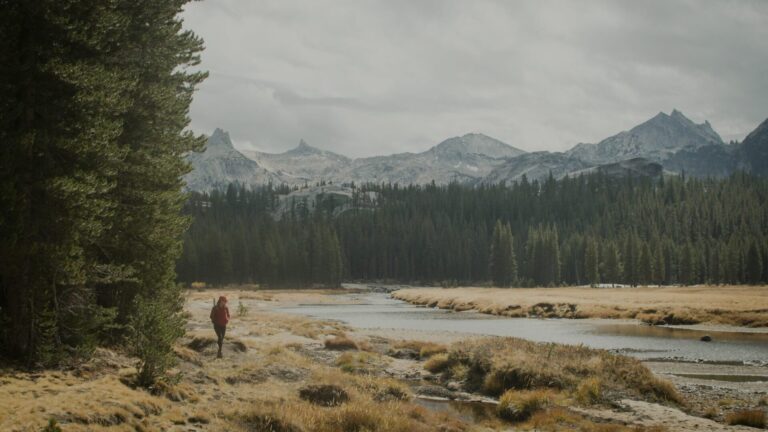I am strangely fascinated by hoarders. When YouTube recommends clean-up videos, I am clicking them without giving much thought. Those videos show the room filled with garbage and trash before professional cleaners help hoarders to clean up their cluttered houses. I am shocked to see how some people live in such a mess, while there is something cathartic about seeing the process of cleaning up.
In Japan, hoarders are often victims of our strict garbage collection system. Each community has a rigid garbage collecting schedule in Japan. We are supposed to take out our garbage on the collecting day, not the day before, not the day after. If the garbage is collected every Monday at 8 o’clock in the morning in the area where you live, you should get up early and put the garbage at the designated space on the street before 8. Taking the garbage the day before is frowned upon, since we put garbage bags directly on the street and there is often no designated collection bin. If the garbage is left for a long period of time, crows and other animals might eat the food inside, making a big mess on our clean streets.
Because of this rigid schedule, busy and overscheduled Japanese people fail to take out their garbage on time, leaving them with no choice but to keep the garbage in their house until the next pickup date. When they fail to take out the garbage for a few weeks or months, their houses would be filled with a huge amount of trash. We call those houses “gomi yashiki” (garbage houses).
It is hard for me to imagine living in such a clutter. The hoarders in the videos are well aware that the state of their houses doesn’t conform to what average people consider as habitable. They stop inviting people to their house, which makes it harder for their family and friends to help them with their hoarding problem.
I wonder why some people fail to keep their house clean. Some say that extreme hoarders suffer from some kind of mental illness. Either they suffer from burnout or their past trauma is causing them to cling to things that we consider as trash. It might be partially true, but the real cause lies in our relationship to trash.
What is waste or trash exactly?
For those of us who can keep our house clean, trash is also a part of our daily lives. In our current society, we can’t live without waste. Trust me I tried zero waste living and saw the limit to this lifestyle. Our food that we buy in grocery stores is securely covered in plastic packages. Drinks come in plastic bottles or paper cups. If we feel lazy to cook and order a takeout, it comes in containers and disposable cutlery. If we are not careful, our house will also be as messy as those hoarders’ houses.
What is waste exactly and how do we categorize what is a waste and what is not? Waste is defined as something that doesn’t belong to our living space. In English, the term “waste” “trash” “garbage” refers to “refuse from places of human or animal habitation” (Merriam-Webster, Waste). The French word, “déchet” has a similar meaning; something that is excluded from and falls out of the social world (ARTE, Les idées larges, 2023).
In Japanese, the word “gomi” initially referred to “mud mixed with muddy water, or mud at the bottom of rivers and oceans” (Kotobank, Gomi). However, in 1655, during the Edo period, the waste management policy forbade the dumping of garbage into the rivers. “Gomi” was then collected and sent to today’s Koto ward district in Tokyo, which once was an island called Eitaishima. Waste was sent out of the city away from the place where people lived.
We push away waste and trash from our living space, but that doesn’t explain why hoarders fail to do the same. We actually have different sensibilities when it comes to what we consider “dirty.” Some people can’t live without everything being at the designated place. On the other hand, some people aren’t bothered when stuff is lying around on the table or on the floor. The anthropologist Mary Douglas explains the relativity of our notion of cleanness.
“Where there is dirt there is a system. Dirt is the by-product of a systematic ordering and classification of matter, in so far as ordering involves rejecting inappropriate elements.” (Douglas [1966] 1984:36)
We order our environment and decide what belongs to where. As Douglas describes, “shoes are not dirty in themselves, but it is dirty to place them on the dining-table,” we learn to put things at specific places (Douglas [1966] 1984:37). For hoarders, it doesn’t feel dirty to leave trash in their living space, while for most of us, we consider it dirty like putting shoes on the dining-table. Trash and waste simply don’t belong in our house or on streets where we can see. Where do they belong then?
Trash in the nature
We organize our house and city so that trash is eliminated from the space in which we live. After it is collected, what happens to it? It is hard to imagine what happens to our trash, because the process is not visible to most of us. Trash is usually dumped in landfills or sent to Waste-to-Energy facilities to be burnt. In other words, it will become a part of the soil and the air.
On the other hand, we don’t like the idea of our trash being part of the natural landscapes. Beaches, mountains, and fields should be trash-free. The air should be fresh in the natural world and shouldn’t be contaminated with our human activities. It is our romanticized vision of nature that we feel the need to eliminate everything human-made from it. It just feels dirty and wrong to put our trash in nature. It is surprising to learn that bushmen who live in a natural environment, aren’t bothered by litter lying around in nature (Suzman, James. 2017: doi: 408-412/1082). Unlike us, they don’t see trash as pollution.
Still we are bothered by the idea that our trash is taking space in the beautifully natural environment. We also know, with our scientific knowledge, that some materials, like plastics, don’t decompose completely for hundreds of years. Some of our trash contains dangerous substances such as lead, mercury, and cadmium, exposing humans and animals to potential danger.
Can you think of any other place on earth where we can dump our trash?
Our trash won’t magically disappear after we take it out
After throwing out our trash from neatly organized houses and cities, we wish that it magically disappears from earth. We manage to place it where we can’t see. If our landfills are full, it is taken to other countries far from ours to dump it on their fields. But it won’t disappear.
It’s like putting the trash in our closet or garage. We know it’s there and we have to do something, but we can pretend it doesn’t exist as long as it stays hidden in the closet. But with the speed that we are consuming today, the closet and garage will quickly be filled and we need to find other places to put our stuff. There isn’t simply enough space on this earth for all the trash that we produce in order to live.
I think that hoarders’ houses are an honest representation of how we live in our current consumerist society – hazardous and inhabitable. I wish there were special professional cleaners who could clean the trash from our planet, but there is no magical solution that would make trash disappear from the earth.
Would you want to keep living on this hoarder’s earth?
References
Merriam-Webster, Waste, https://www.merriam-webster.com/dictionary/waste
Pourquoi a-t-on besoin de jeter ? | Les idées larges | ARTE, 2023, https://www.youtube.com/watch?v=QbI_TpP_xn4
Kotobank, Gomi, https://kotobank.jp/word/%E3%81%94%E3%81%BF-168353
Douglas, Mary. 1966 (1984). Purity and Danger: An Analysis of Concepts of Pollution and Taboo. Reprint.
Suzman, James. 2017. Affluence Without Abundance: The Disappearing World of the Bushmen. Bloomsbury USA.








